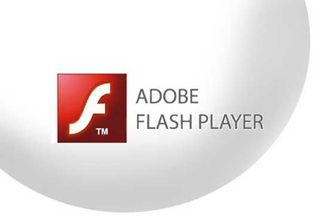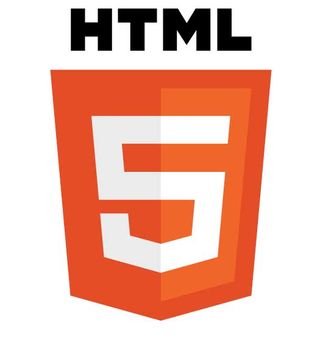Why HTML5 is causing the ad industry pain
HTML5 is proving one big headache for the digital advertising world, says Chris Ball, head of digital at Hogarth Worldwide.

We're currently facing a serious skill shortage in the digital advertising world for HTML5 expertise. Why has this happened?
Well, let's just say we didn't expect the shift from Flash to be so sudden and so all encompassing. To explain further, here's a little recent history lesson – and how we're working towards a solution.
Over recent years, HTML5 has become increasing popular because you can't run Flash on a lot of tablet devices or mobiles – due in good part to Apple blocking it on their iOS devices.
HTML5 also allows you to offer more interactivity in principle because it's code-based rather than an animation program. As a result, media agencies who wanted interactivity on their ads for mobile started to shift to HTML5.
So some of our people also started creating ads using HTML5, with our front-end developers working with the leading digital ad management platforms, such as DoubleClick, Sizmek, Flashtalking and Celtra.

These ad servers all have different tools for building ads – they're a little bit like applications – you upload elements and images and you try to create the ads within their system.
The challenge though is that all those tools run differently. Some are more sophisticated, while others are frankly still in beta in terms of functionality. And because each ad serving tool is configured differently, the new breed of developer needs to be experienced across multiple platforms.
Slow and laborious
There's an option for developers to hand-code an ad in HTML5 without using the tools. The downside is it's quite a slow and laborious process from a delivery point of view and it costs more money.
It's interesting the change we've seen in the industry in such a short time. At the beginning of this year, maybe 10 percent of the media we worked with would be HTML5 units, with the bulk of the workforce still involved in creating Flash banners. HTML5 was a small proportion of a client's media schedule, with Flash taking the lead.
This meant the amount of HTML5 ad building talent needed in each agency was smaller. At Hogarth, for example, we were supplying Flash banners for a long time producing thousands every month, with whole teams and workflows based around developing Flash ads in volume, quickly and efficiently.

Then, over the summer when Google and Mozilla switched off Flash in Chrome and Firefox, the media agencies stopped booking Flash ads altogether. A complete turnaround!
Everyone knew it was going to come, but not as fast as it did. We expected a crossfade, a transition between Flash and HTML5, but instead we got what felt like someone turning off a light switch.
What that has meant for ad production is that you have a lot of people in your team who can build Flash ads, but suddenly they aren't appropriately skilled to create ads in what's required – whether they're bespoke HTML5 builds or built using the ad server tools.
Skills shortage
Another problem is that the people most conversant with HTML5 are typically front end developers with a background in building web / mobile sites. These developers are not motivated to work on campaign ads, as they'd rather be building sites and mobile applications than banners – what they trained for.
So now you've got a situation where those who have these skills are not really keen to work on banners, while those who do want to work on them don't necessary have the new skills required. You can't win. So what can you do?
Of course the few people who already know how to use the ad server tools are in high demand, so as a result they're on very short contracts, with much higher day rates. Subsequently costs have increased in the short term while agencies source permanent solutions.
Budget issues
Clients don't always have the budget to pay for this new reality. They've been used to paying for Flash banner ads at a fairly commoditised rate, but all of a sudden a banner ad can now be costing two or three times what a Flash banner used to cost, because it happens to be hand-coded.

This is compounded by the fact that the HTML5 specifications from a lot of the media agencies are still not locked down, and are legacy-led from the days when Flash was prevalent. As a result, ads are being built and rejected because they don't always fit the ad server slots. This has the effect of adding more QA and revision times, and again costs rise.
So clients are finding it challenging, media agencies are finding it challenging, freelancers will find it challenges. And we're at the coalface because obviously we're producing the ads. The question is, how will we all solve this?
Long-term solutions
The solution I think will come by focussing on the ad servers themselves, and by retraining people who have Flash experience on the application of those tools. It's more work, but in the long-run it makes sense.
There are some options to help with this challenge. At Hogarth, we've nominated several of our existing HTML5 client team leaders to act as 'ad server gurus'.
That expert's job is to both understand the ad server tools and to be the 'go to' person for disseminating that knowledge and support. They have created a training plan across all the key tools which is now being rolled out across our global hubs.
Training teams
We're using this to train mid and junior design talent and existing Flash developers on these ad server tools, to ensure the costlier front-end developers are only engaged on complex bespoke builds rather than day-to-day volume.
By training up large numbers of relatively junior team members, we'll ensure they'll learn their skill and trade and we'll be able to offer volume to our clients and get the production done more quickly.
The existing HTML5 client teams can address more complex challenges that pop up, or be deployed when there's a need to build bespoke units. We're also rolling out a concurrent program to inform clients about best practices for design and build to help streamline the production process.
The future
Over time the ad serving tools themselves will become more sophisticated and more streamlined. I feel that deploying HTML5 in a day-to-day work environment can be a designer, as well as a developer skill.
Just like the way that you can use Photoshop, Illustrator and InDesign to begin to design web banners and applications with Flash, the ad server tools will become an extension of the design package on your desktop.
Words: Chris Ball
Chris Ball is head of digital at global advertising production company Hogarth Worldwide. Recent work has also included e-books, Facebook and Twitter apps, games and interactive experiences. They also design and build traditional, mobile and responsive websites.
Like this? Read these!
- Brilliant Wordpress tutorial selection
- Illustrator tutorials: amazing ideas to try today!
- Discover the best blogging platform

Thank you for reading 5 articles this month* Join now for unlimited access
Enjoy your first month for just £1 / $1 / €1
*Read 5 free articles per month without a subscription

Join now for unlimited access
Try first month for just £1 / $1 / €1
Get the Creative Bloq Newsletter
Daily design news, reviews, how-tos and more, as picked by the editors.
The Creative Bloq team is made up of a group of design fans, and has changed and evolved since Creative Bloq began back in 2012. The current website team consists of eight full-time members of staff: Editor Georgia Coggan, Deputy Editor Rosie Hilder, Ecommerce Editor Beren Neale, Senior News Editor Daniel Piper, Editor, Digital Art and 3D Ian Dean, Tech Reviews Editor Erlingur Einarsson and Ecommerce Writer Beth Nicholls and Staff Writer Natalie Fear, as well as a roster of freelancers from around the world. The 3D World and ImagineFX magazine teams also pitch in, ensuring that content from 3D World and ImagineFX is represented on Creative Bloq.
